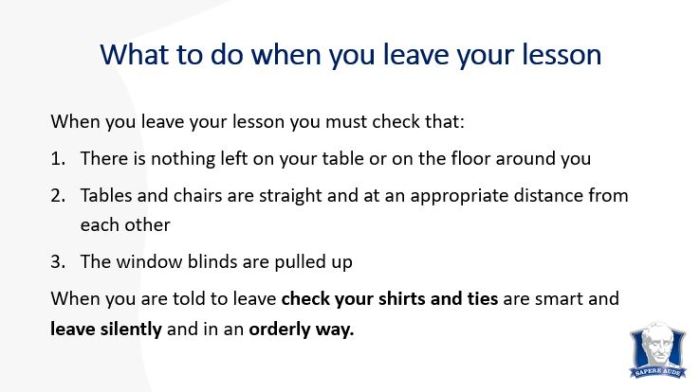As a Head of History, I was always interested in the relationships between the academic and pastoral within schools. This interest intensified when I took the post of Head of Year 11 in addition to my existing Head of History role; evidently, the two roles intertwined more than I had expected. The parental meetings I held, so often referred to: pupils’ conduct in lessons, how they were working independently at home, how motivated they were, how accessible they found certain subject areas. In my Head of Year role, it became clear there was a need to consistently talk about teaching and classroom culture.
Despite this amalgamation, most schools tend to structure their senior leadership teams so that a different senior leader is responsible for behaviour and classroom culture to teaching and learning. This could imply a separation between the two, but I think anyone working in secondary schools knows that one relies upon the other. Pupils need to understand the value of working hard and striving for the highest standards, being proactive in lessons and taking collective responsibility. Consequently, as an Assistant Head of Teaching and Learning, I have tried to promote a positive classroom culture and change pupils’ attitudes to learning.
Traditionally, improving teaching and learning has tended to focus on the training of staff rather than pupils themselves. At the West London Free School, our staff training programme is something we are very proud of and we have intensified our dialogue on teaching and learning amongst staff (a blog for another time). However, I could see that quick gains could be made by improving how pupils viewed their own role in learning across the school.
One way I attempted to change mindsets was through assemblies. The aim was to communicate the need for them to take a role in the process of ‘teaching and learning’. I planned for each assembly to influence pupils’ attitudes regarding their conduct in lessons and how they prepared for lessons at home. I also wanted to make sure each assembly made a reference to our school’s three core values: kindness, hard-work and high standards.
My first assembly was on the unique nature of our school ethos, the second was based on marginal gains and the third was on my interpretation of collective responsibility. Each assembly focused on one concept that I, and others, could then repeat to pupils consistently. The assemblies were split into three parts.
The first introduced the concept in a question to answer by the end of the assembly. The question was projected for pupils to view as they entered the hall (see figure 1) e.g. Why do I work at the West London Free School? Or How can we benefit from collective responsibility? These questions gave the assembly a purpose, with the question being answered by the end of the assembly.

The second was to provide a story to model the sort of positive behaviours that would enhance classroom culture. My first assembly told the story of why I moved from Suffolk to West London to explain how special the school ethos is to me and how buying into it benefits everyone. The assembly on marginal gains was based on the world record marathon success of Eliud Kipchoge. It explained how he broke the marathon into component parts, seeing every weakness as an area through which he could improve his performance. Whilst collective responsibility focused on the story of JFK and a janitor at NASA who argued his role was to put a man on the moon rather than simply clean the floors of the building. Each story was chosen to offer a memorable concrete example of the abstract concepts.
After each story I then modelled examples of positive behaviours in school that were in the spirit of the stories they had heard (see figure 2). I spent time explaining how these behaviours and the concept at the centre of the assembly would benefit them individually. I also linked this to whole-school policies we had introduced to explain their rationale. For example, in figure 3 you can see our whole-school presentation guidance which was displayed to show it aimed to make marginal gains to enhance their learning. ‘Every time you write the date in short-hand you save valuable time that adds up’. What had originally been a meaningless piece of admin, was now written with purpose as pupils clearly understood the rationale for the policy and how they, and their peers, could benefit. Likewise, with collective responsibility I listed a number of behaviours (see figure 4), then gave pupils time to decide which were examples of taking collective responsibility and which were not. I then picked out the examples of behaviour that would benefit everyone collectively, and therefore each of them individually. For example, with completing homework to a high-standard; ‘if everyone completes their homework then all our general knowledge improves, the quality of our debates increase, our confidence and morale improves and it means we are ALL more likely to achieve’. The idea was to give practical examples that pupils could adopt as soon as the assembly ended, a way of turning an abstract concept into something practical to influence how pupils behaved in the classroom.



Similarly, I would then use tutor time to communicate the rationale of whole-school teaching and learning policies to pupils. I have included in figures 5 an example of our exit routine (from our entrance and exit routines). The policy was initially introduced in assembly to pupils, then again reinforced in tutor time where pupils were able to dig deeper and ask questions about its mechanics and rationale. Visitors over the past two terms have commented on how self-regulated the transitions are, that pupils tend to follow the rules of their own accord. I think this is because pupils understand that the rationale is to benefit them. If pupils do break the routines, I always point to the message of my assemblies mentioned earlier in the blog; ‘remember marginal gains, the time wasted breaking that routine may not seem to matter now but it will add up to make a big difference’ or ‘don’t let everyone else down, remember you have a collective responsibility so we all achieve’.

In summary, I tried to use assemblies to introduce the big concepts which could change classroom culture and offered practical examples to help pupils change their behaviour. I encouraged staff to reinforce this message by then saving my notes and PowerPoint on the shared area so they could access it for future reference. I then used tutor time to launch whole-school policies linked to these concepts and gave tutors the brief to dig deeper into the rationale of these policies for pupils.
These are my first modest attempts to try to change classroom culture in my SLT role. I hope it is of help at least to somebody. I would welcome hearing other peoples’ experiences.
Thanks Louis. I’m starting in a new role in September as a “Progress leader” and I’ve been researching, reading and trying to get my “vision thing” sorted. Your thoughts on marginal gains and collective responsibility are what I’ve been trying to articulate. Thank you.
LikeLike
I am really pleased this has been so useful Matt. Let me know if I can help further.
LikeLike
A comprehensive strategy which, like all good strategies, starts with the why. When students and teachers understand the ‘why’, the ‘what’ is much easier to implement successfully. As someone who has been in both roles separately, I’m convinced that you really cannot improve teaching and learning without improving the attitudes of students towards the learning process. A great article!
LikeLiked by 1 person